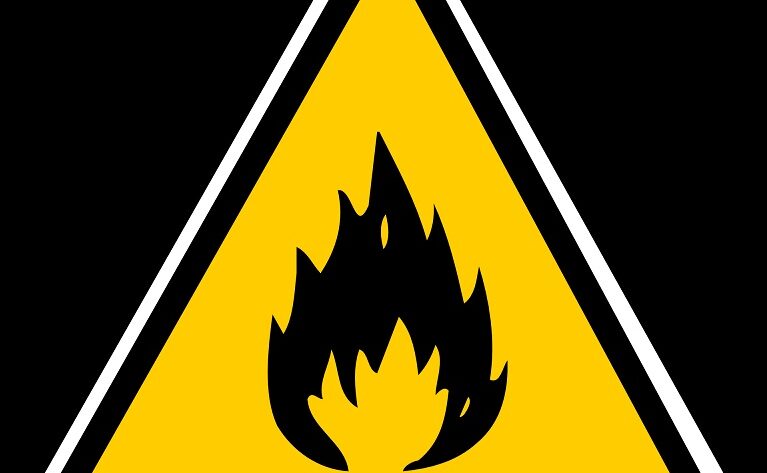A 2019 study into workplace accidents found that over 40 people a year die from chemical exposure whilst working.
If you don’t know how to handle them safely, you could be putting yourself and your coworkers at risk. In this brief guide, we will discuss some of the basics of hazardous chemical handling.
We’ll cover what hazardous chemicals are, why they’re dangerous, and how to protect yourself when working with them. Read on to find out more and how to stay safe when handling dangerous substances.
What are Hazardous Chemicals?
Hazardous chemicals are any substances that are known to be harmful to human health or the environment. This includes both natural and synthetic chemicals. Some hazardous chemicals are highly reactive, flammable, or explosive. Others may be corrosive, poisonous, or carcinogenic.
There are many different types of hazardous chemicals, and they can be found in a variety of workplaces and products. Some common hazardous chemicals include:
- cleaning products
- paints and varnishes
- pesticides
- petrol and diesel
- solvents
- adhesives
Many common workplace items that people handle every day are actually known as hazardous chemicals. People may be unwittingly using these products without realizing that they can have serious consequences if they are spilled.
Why are Hazardous Chemicals Dangerous?
Hazardous chemicals are dangerous because they can cause serious health effects, including breathing difficulties, skin lesions, organ failure, and even in extreme cases, death if they are not used properly.
Exposure to hazardous chemicals can occur through inhalation, skin contact, or ingestion. Whether this is from accidental spills, leaks or
Some of the health effects of hazardous chemical exposure include:
- irritation of the eyes, skin, and throat
- dizziness and headaches
- difficulty breathing
- cancer
- organ damage
The Radium Girls: A Case Study
One of the most famous cases of hazardous chemical exposure occurred in the early 1900s. The Radium Girls were a group of women who worked painting watch faces with radium-based paint.
The workers would lick the brushes to keep them pointy, and as a result, they ingested large amounts of radium. This led to many of the women developing cancer and other health problems.
The Radium Girls case led to better regulation of hazardous chemicals in the workplace. It also highlighted the importance of proper safety precautions when working with hazardous chemicals.
In the 1900s, the hazardous effects of radium were still being discovered. However, we have much more knowledge and information in the 21st century about which chemicals are hazardous to the human body if exposed over a period of time.
How Can You Protect Yourself
If you work with hazardous chemicals, it is important to take precautions to protect yourself and your coworkers. Some basic safety measures include:
Knowing what Hazardous Chemicals are Present in your Workplace
It’s important to keep a log of all hazardous materials in the workplace, who is allowed to use them, and whereabouts they are kept.
Detailed records are key when it comes to dangerous substances so that everyone in the workplace knows about their storage and their properties.
Store Hazardous Chemicals in a Cool and Dry Environment
Hazardous chemicals should be stored in a cool, dry place away from any heat sources. This will help to prevent any chemical reactions that could happen with a heat or water source.
Keep Hazardous Chemicals Away from Food and Drink
People should never eat or drink near hazardous substances as this could result in exposure or ingestion. In the workplace, people should always wash their hands after handling or transporting any chemicals.
Wear Appropriate PPE Clothing
If you are working with hazardous chemicals, you should always wear the appropriate Personal Protective Equipment (PPE). This might include gloves, goggles, and a face mask.
The type of PPE you need will depend on the hazardous chemical you are working with.
Report any Suspected Leakages or Spills
If you think there may be a hazardous chemical leak or spill, it is important to report this to a supervisor immediately. They will be able to assess the situation and take the appropriate action.
Even if it turns out to be a false alarm, it’s always better to be safe than sorry!
Give Employees Appropriate Training about Hazardous Chemicals
All employees who work with hazardous chemicals should receive appropriate training. This training should include information about the dangers of exposure, how to handle and store hazardous chemicals, and what to do in the event of a spill or leak.
Ensure all Hazardous Material is Properly Labelled
Any hazardous chemicals in the workplace should be clearly labeled with their name and any relevant warnings. This will help people to identify the substance and take the necessary precautions.
If employees are unaware of the potential risks, this is where accidents can occur by mishandling. If you want to learn more about how to label hazardous material, check it out here.
Have an Action Plan in Place if a Chemical Spill Happens
In the event of a hazardous chemical spill, it is important to have an action plan in place. This plan should be designed to contain and clean up the spill as quickly and safely as possible.
The plan should also include procedures for evacuating people from the area, exit points, and who should be in charge if the worst should happen.
It can also be helpful to have regular chemical spill drills to practice going through the motions so that people can be prepared and know what to do.
Hazardous Chemicals: Know What to do in the Workplace
Working with hazardous chemicals can be dangerous if the proper precautions are not taken. However, by following some basic safety measures, you can protect yourself and your coworkers.
Some of these measures include knowing what hazardous chemicals are present in the workplace, keeping detailed records, storing hazardous chemicals in a cool and dry place, and wearing appropriate PPE clothing.
If you found this article informative and want to read more like it, check out our other blog posts!




